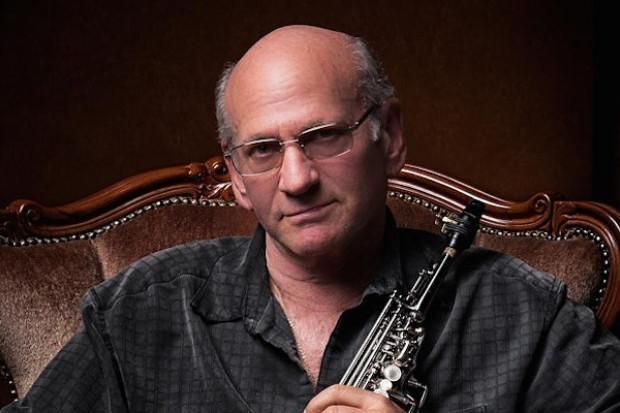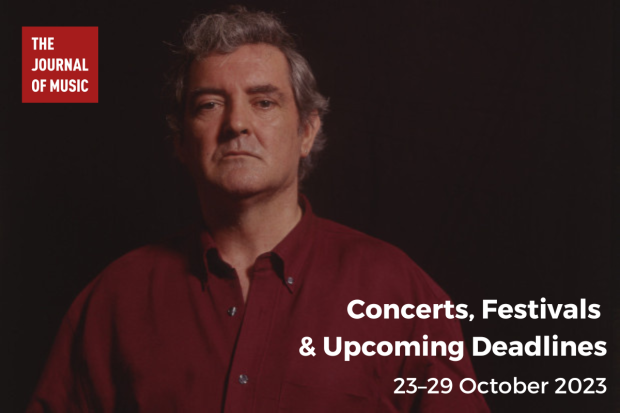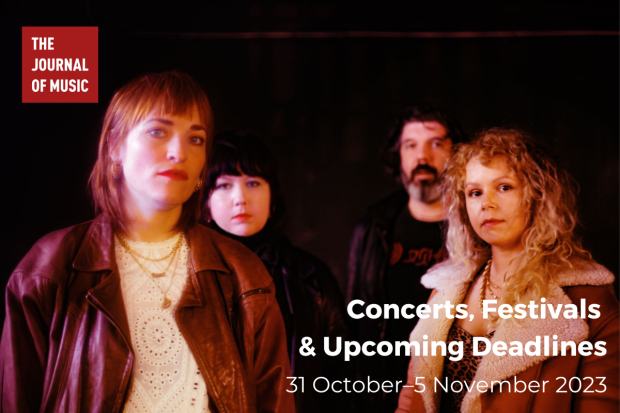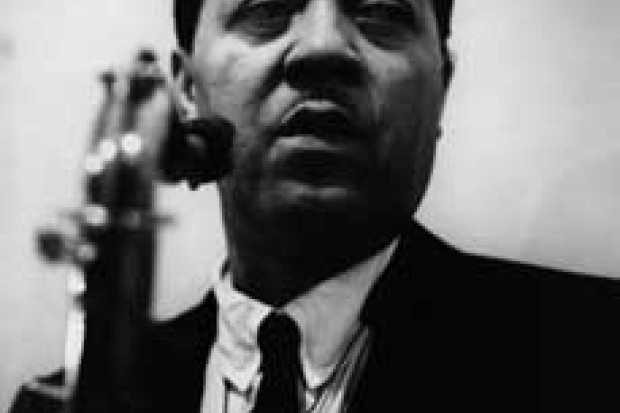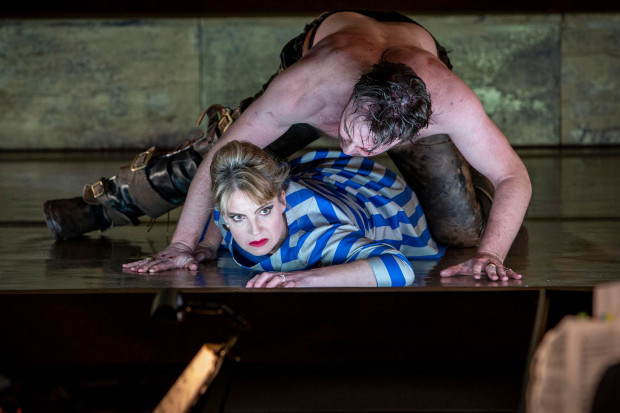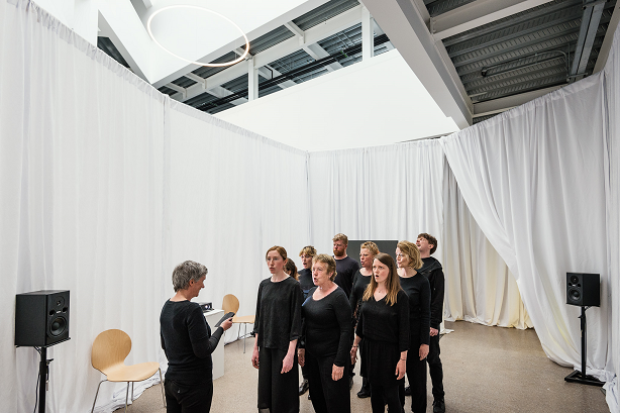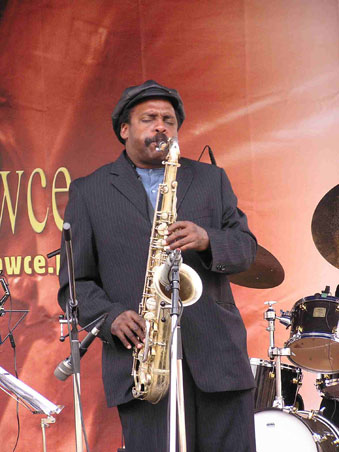
David Murray
Hearing Voices
The tenor saxophone is the heavyweight instrument of jazz, and David Murray is its reigning world champion. The latest in a line running from Coleman Hawkins to Ben Webster to Paul Gonsalves to Sonny Rollins, Murray combines the full-blooded sound and intense swing of this tradition with an avant-garde sensibility that takes its cue from late Coltrane and the free-jazz probings of Albert Ayler. And he’s done it with a technique that few in jazz history can rival.
Murray has a lot to say – over the last three decades he has released more than 130 albums as leader and with ground-breaking groups such as the World Saxophone Quartet. Most recently, he has been exploring a variety of world sounds from Africa and the Caribbean and, as he puts it, ‘hearing voices’ – marrying his music to words in collaboration with poets living and dead.
I met with Murray last October at the Cork Jazz Festival, where he was performing with the most recent version of his Black Saint Quartet. He was the highlight of the festival, delivering a programme of highly charged tunes on tenor sax and bass clarinet that ranged from his 1976 classic ‘Flowers for Albert’ to the recent ‘God of Pain’, with lyrics by the American poet Amiri Baraka. I asked him about his current interest in the spoken word: ‘Everything I’m writing these days involves words. Amiri Baraka and I are writing a jazz opera right now – I call it a “bopera” – called The Sisyphus Syndrome. It’s a re-transcription of the Sisyphus myth, from the angle of African-American history. We have a sixteen-voice gospel choir, musicians and actors, and we’ll be premiering it in February in Milan at the Teatro Manzoni. I’ve also selected fifteen poems from the poet Alexander Pushkin and set them to music, some in Russian, some translated. We’ve performed that three times, and we’re going to play it at Yale next year.’
Pushkin, of course, had an African great-grandfather, and Murray’s interest in Russia’s national poet emerges from his reading of literature and history. His most recent recording, Sacred Ground, engages with historical events closer to home. The album grew from his soundtrack for Marco Williams’ documentary Banished, an account of the violent eviction of thousands of African-American families from their homes in the American South in the late-nineteenth and early twentieth centuries. It includes two songs with lyrics by poet and pianist Ishmael Reed: ‘Ishmael had been aware of those events before he saw the video, but to witness what Marco Williams had done with this documentary brought back a lot of feelings of despair about our history in America. Having witnessed that kind of footage, it was easy to come up with the music. And after we had done the soundtrack, the images were still lingering in my head, so I decided to go further and do a record with all those lingering images and sounds.’
Murray is one of the great jazz innovators, not just because of the power of his playing, but also because he is constantly searching for new ways to express the ‘lingering images and sounds’ of history and world culture. He has a deep musical curiosity, and his collaboration with musicians from Cuba, Senegal and Guadeloupe has brought jazz into contact with rich streams of world music: ‘World music gives you a chance to hear what different people do with their own folk traditions. I mean, when you hear music like that you’re hearing the raw sounds of a civilisation that’s isolated. But jazz, well, jazz is worldly music I’d say, because we’ve had the opportunity to travel, and our main base is New York City, one of the hippest cities in the world. And jazz is everywhere now. There are people making money off the word jazz in Nepal.’
And this contact, he says, is enriching in both directions: ‘It’s like Ornette Coleman said, and James Blood Ulmer wrote a song saying it: “Jazz is the teacher and funk is the preacher”. When you put jazz into popular music you make it a little bit better. You bring a little jazz intellect into it. It might sound a little hipper, you know, it might sound a little more contemporary. You put a sus chord in there where they were always playing majors and it’s going to make it sound a little more far-reaching. That’s what I think jazz does to folk music, it contemporises it. And folk music gives jazz more information to explore.’
In Cork, Murray’s quartet included Art Ensemble of Chicago bassist Jaribu Shahid and two younger musicians: drummer Malik Washington and pianist Lafayette Gilchrist. Gilchrist in particular has big shoes to fill: he has replaced John Hicks, Murray’s pianist of choice going back to the early 1980s, who died two years ago. One of the most memorable nights in the thirty-year history of Cork Jazz Festival was in 1994 when Murray and Hicks played as a duo in a small room in the Metropole, and all the festival headliners, including Chick Corea and Larry Coryell, crammed in to listen.
Gilchrist, Murray says, has learned well: ‘Luckily, Lafayette was able to share a few sessions with John before he died. I knew he was eventually going to be my piano player. And John… anyone who ever played with John studied with John. He was a direct descendant of people like James P. Johnson, Eubie Blake, Monk, Cedar Walton – great players from New York. That piano line is great, and Lafayette is going back and forth to New York a lot from Baltimore, and he’s part of that piano tradition now.’
Murray’s own place in the tradition has been secure for a long time, and his relationship with the past is such that he engages with jazz icons as an equal. A good example of such historical rapport is his album Octet Plays Trane. Five of the six tunes on the tribute are Coltrane themes, but they are radically re-imagined by Murray, both in the arrangements and in the way his huge sound, so much his own, absorbs and transcends the material. And when Murray speaks of Coltrane, it is with both respect and confidence: ‘Here’s a guy who was put here to do something really special. He was born with big ears, but he developed into the genius that he was by perseverance. He really took the tenor saxophone to the maximum, and he could really swing, too. People play his notes, but they don’t swing his notes. So when I did a project on Coltrane, I think what differentiated mine from others was that I tried to concentrate on the fact that his ability to swing was really his strong point. The notes are Trane’s, the swing is Trane’s, but the intensity is mine.
Anyone who has heard Murray perform recognises that intensity and knows that he can swing pretty well himself. And it is great to see someone who has been recording and touring for as long as he has still get excited about new projects, and applying his talents and searching sensibility to the present and future of jazz.
Published on 1 January 2009
Kevin Stevens is is a Dublin-based novelist and writer on history, literature, and jazz.












